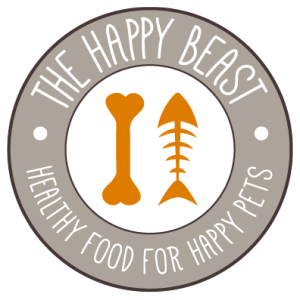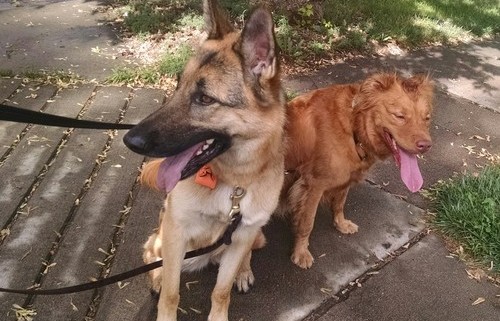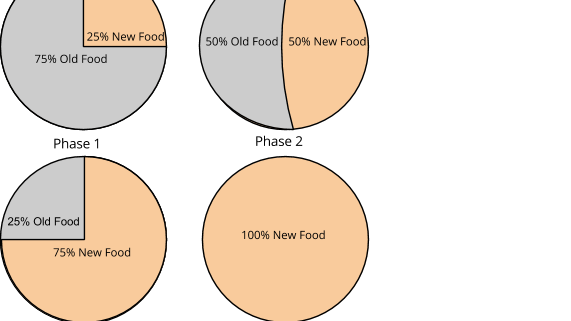It’s pet dental health month and I really don’t want to brush my dog’s teeth. Now, I’m crazy about my dog’s health. I know maintaining a healthy oral system is SUPER important in preventing disease and it’s also important (to me) that Pi doesn’t wake me up with dog breath! BUT brushing her teeth every day just isn’t going to happen. Fortunately, there are simple, natural ways to clean your dog’s teeth and keep her breath fresh. And all without brushing.
Raw Bones
Raw bones are AMAZING for dental health. They’re what keep animals’ teeth so healthy in the wild without brushing! Tearing at connective tissues and meat cleans between the teeth while grinding on the bone scales off tartar. Chomping down on more delicate bones like chicken wings, necks, and lamb bones scrubs the surfaces of the teeth.
RAW bones are generally safe, while cooked bones should be avoided as they may splinter. Stop in The Happy Beast, and we can help you choose bones that are safe and effective for YOUR dog.
My dog gets a recreational femur bone (from Primal) a few times a week and I replace her normal meal with a piece of raw bone-in chicken every other night.
Bully sticks, tendons and other chews also stimulate the gums, work the jaw muscles and promote overall health.
Daily Dental Treats
Dogs love treats, so choose ones that provide health benefits!
We used DentaTreat with our little chihuahua-mix when she had cancer and lost interest in chewing on bones. After sprinkling it on her food for a few weeks, the tartar started sliding off her teeth.
“Composed of dental-active natural cheeses, minerals, apple polyphenols , and many other ingredients that help to maintain oral health, DentaTreat™ is a cat and dog supplement that can be sprinkled directly onto food, or it can also be used with a toothbrush as a tooth cleaning powder.” (Wysong.net)
InClover’s Grin treats are another easy and tasty way to support oral health. Chlorophyll, green tea extracts and prebiotics support a healthy mouth and stomach, fighting bacteria to improve your dog’s breath!
Enzymatic Oral Sprays and Gels (PetzLife)
These are ideal for dogs and cats who already have plaque buildup on their teeth. Grape seed and grapefruit extracts help reduce inflammation and disease while neem, peppermint and thyme oils fight bacteria and pathogens that cause gingivitis and bad breath. Just spray or rub on your dog’s gum line.
More Fresh Foods, Less Kibble
Kibble shatters on first crunch and is immediately swallowed. This allows inadequate time for any mechanical cleaning that might occur if chewed thoroughly. Crunching kibble cleans your dogs teeth only as well as chewing crackers cleans ours! Read more here: http://www.dogfoodadvisor.com/choosing-dog-food/dry-dog-food-cleaner-teeth/
Adding a fresher form of food to your dog or cat’s kibble will provide plaque fighting enzymes for their system and support healthier gums and teeth.
Genetics
It’s important to note that genetics play a big role in dental wellness. In The Nature of Animal Healing (borrow it from our store or buy it online) holistic vet, Dr. Martin Goldstein, DVM explains that generations of breeding “to hunt or show better or simply to look cuter” has “distorted the natural shape of their jaws.” Some dogs, especially small and toy breeds, will require more attention. Have your vet check your dog’s teeth at his routine exam. If tartar or disease have already set in, a dental cleaning may be in order. Even if your dog is very susceptible to periodontal disease, you can space out his cleanings by providing daily care with the right bones, chews, diet and treats!


